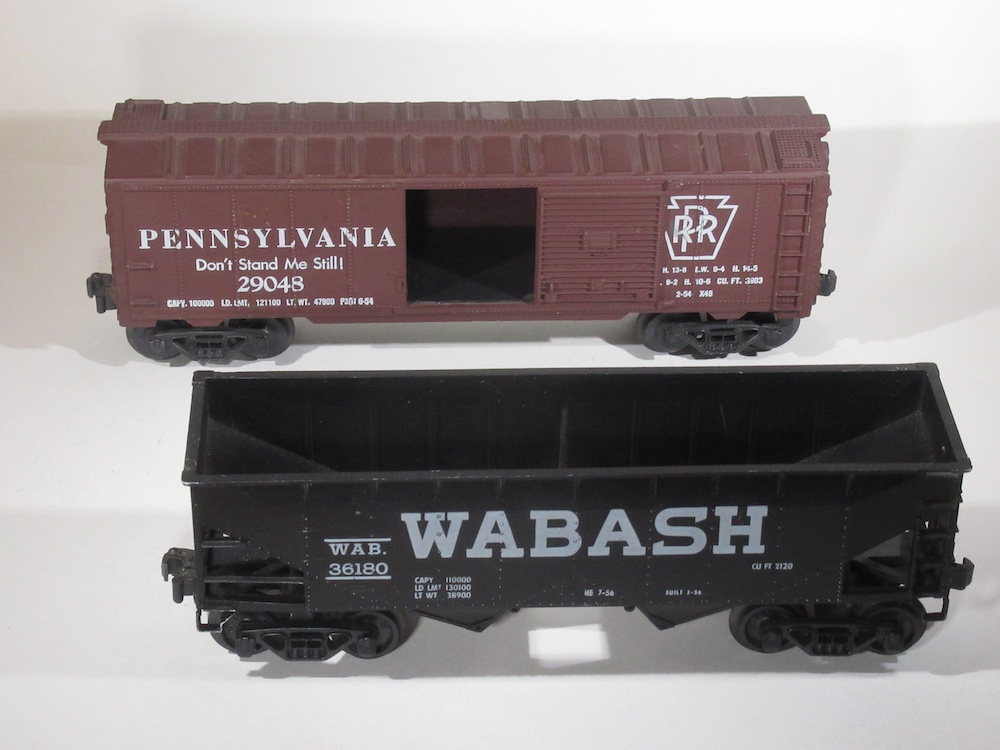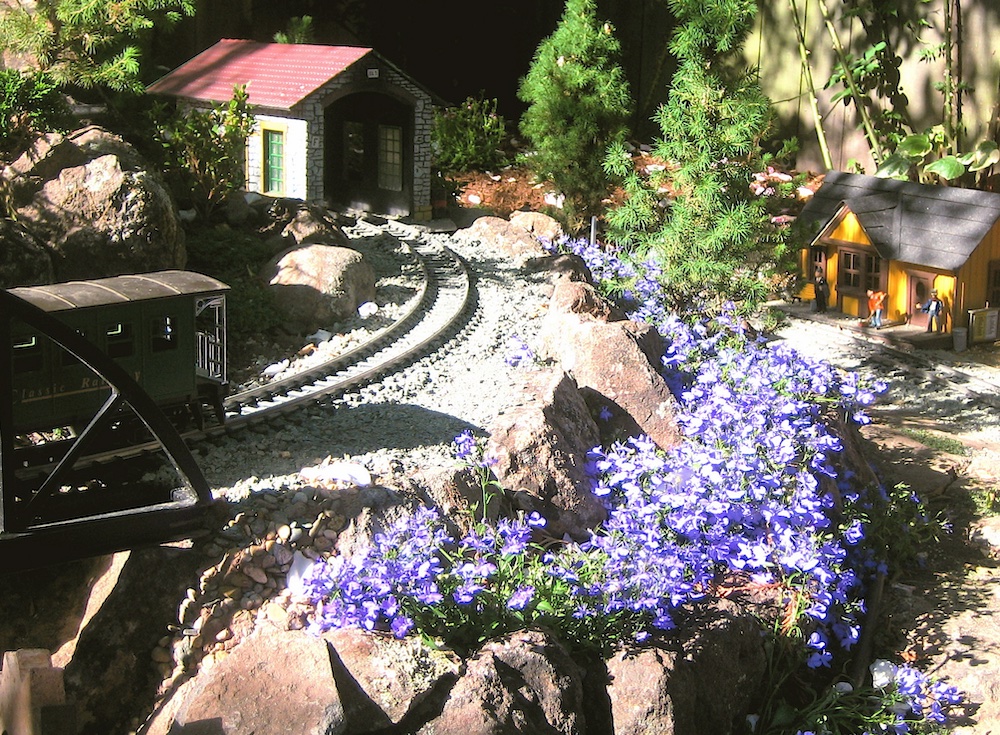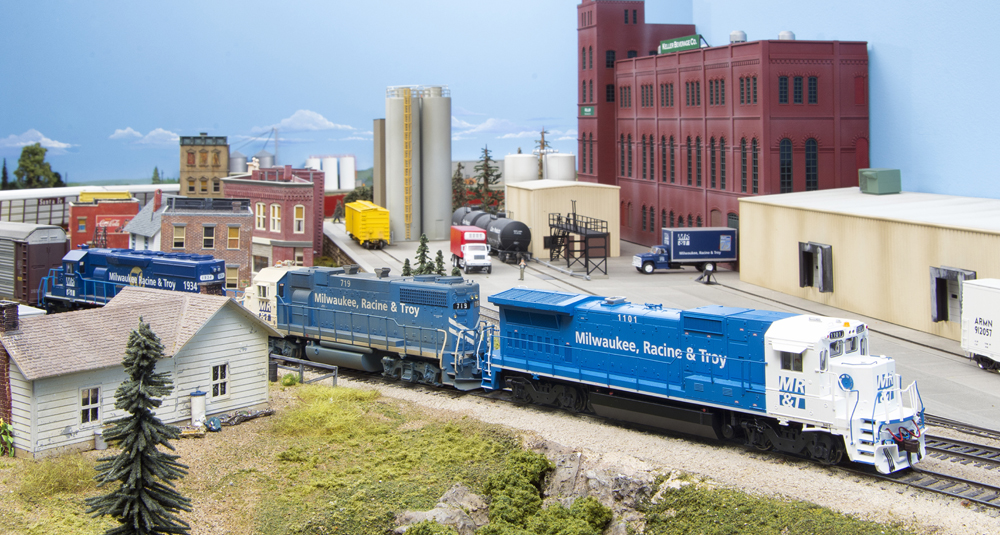Lionel No. 6464 boxcars made their debut 70 years ago. Over the past few decades those near-scale replicas of modern single-door boxcars have become some of the most popular and appreciated members of the postwar cataloged lineup. Collectors at every level – from beginner to advanced – hunt for examples of the 29 models offered in sets and individually between 1953 and 1969. Operators enjoy running the colorful boxcars, decorated with the names and heralds of railroads large and small, on their home layouts.
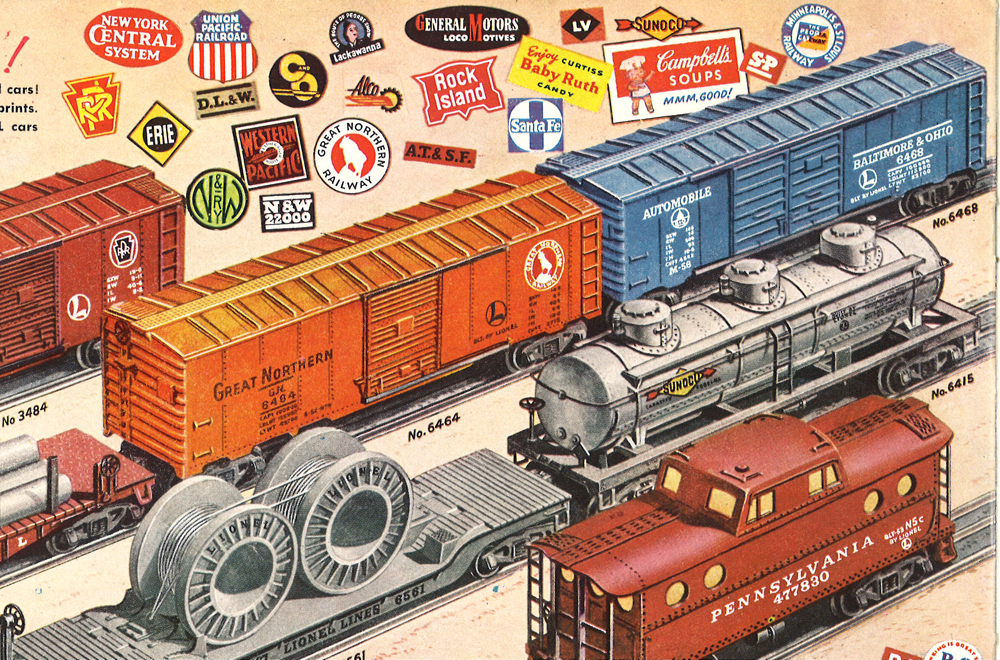
Lead-up to 1953
Boxcars for the O and O-27 roster had been big business for Lionel prior to the watershed year of 1953. Starting in 1948 with the introduction of the first No. 6454 cars, sales executives at the firm revealed a new approach to common rolling stock in the line.
Previously in 1946 and ’47, Lionel had cataloged a pair of similar 9¼-inch-long boxcars. The No. X2454 came with either just the name and keystone herald associated with the Pennsylvania RR or with that esthetic feature and the name of Baby Ruth candy.
The length and markings left no doubt the X2454 was a toy rather than an exact replica of a boxcar currently in use on an American railroad. And consumers went along with that fiction. Youngsters were as satisfied with the little model as they were with steam engines and tenders whose lettering designated them as belonging to Lionel Lines.
By 1948, however, change was in the air. Engineers at Lionel had so noticeably upgraded the trucks and knuckle couplers installed on rolling stock that executives thought they should modify their system of identifying products. To be specific, the firm went from labeling cars with four-digit numbers beginning with “2” to numbers starting with “4.” Consequently, new 9¼-inch-long boxcars were listed as No. 6454 models.
More to the point, besides reviving the Baby Ruth boxcar with a Pennsylvania RR keystone, Lionel announced cars lettered for the New York Central and the Santa Fe. It likely added the two newcomers because 1948 was the year when, thanks to financial support from the New York Central and the Santa Fe, Lionel brought out a spectacular O gauge model of the Electro-Motive F3 diesel decorated for those two famous railroads.
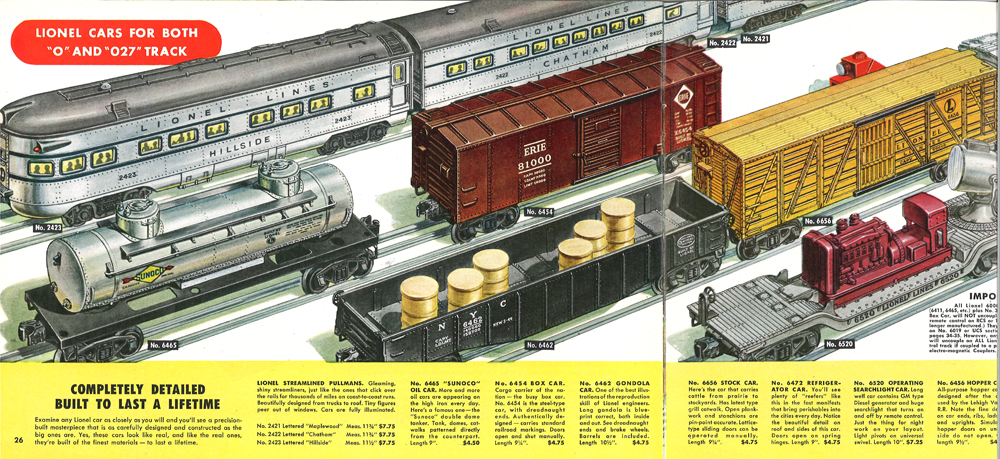
Interestingly, the list of 6454 boxcars changed dramatically the next year. For 1949, Lionel chose to drop from its line all three of the road names it had used in 1948 and replace them with a different trio of identically looking models. The brown-painted cars came lettered in white for the Erie RR, the Pennsy, and the Southern Pacific.
The familiarity of hobbyists with those three nationally known lines meant the cars had great commercial potential. Decision makers at the toy train giant evidently saw the wisdom of striving to appeal to the broadest audience possible for their rolling stock. In addition, they likely were aware that manufacturers of HO and O scale freight cars kept expanding their product lines with boxcars decorated in a variety of road names.
Commitment to realism
The pair of EMD F3s that made their debut in 1948 and the three 6454 boxcars announced the following year represented a turning point for Lionel after the war. Aware of the heightened interest in authentic replicas by model railroaders focusing on O and HO scale, engineering and sales personnel acknowledged a need for Lionel to bring out more realistic engines and rolling stock. What they began doing in the late 1940s would gain momentum early in the 1950s, even with delays caused by the Korean Conflict.
Advancing the trend toward scale realism were the extruded-aluminum models of streamlined passenger cars introduced in 1952. Lionel rushed those handsome replicas of the latest coaches, dome cars, and observation cars to market because it sought to counter the work of a nascent rival, American Model Toys, which had developed similar models.
Then came the group of near-scale boxcars and other kinds of rolling stock AMT heralded for 1952. Never before had O gauge hobbyists had so wide a range of modern boxcars to consider. And the brown-painted models compatible with Lionel engines came decorated for a huge array of railroads in every region of the U.S. as well as Canada.
Lionel, to put it bluntly, had no alternative but to respond to the challenge laid down by the firm now known as Auburn Model Trains. And it quickly did so in 1953.
Four great cars
The response to AMT and the breakthrough for the O gauge marketplace came in the form of a quartet of near-scale boxcars whose product number began with “6464.” As announced in the advance catalog issued by Lionel for wholesale houses and department stores, the “New Scale Box Cars” were “long [and] beautifully detailed … with new-style dreadnaught end and roof ribs.” The newcomers measured about 11 inches in length.
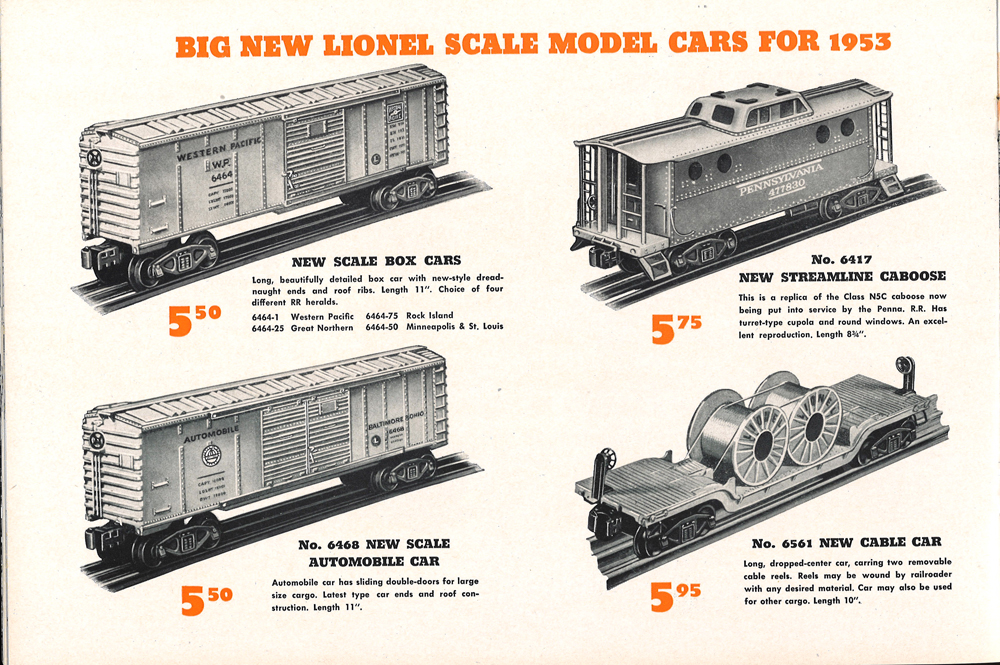
The advance catalog listed the boxcars: Nos. 6464-1 Western Pacific, 6464-25 Great Northern, 6464-50 Minneapolis & St. Louis, and 6464-75 Rock Island. Each of them would have a retail price of $5.50, which calculates to $62.07 in today’s dollars.
Lionel painted each boxcar just one color, which was the easiest and most cost-effective manner of decorating the injection-molded body shells. The models were heat-stamped with the road name and another esthetic element (a slogan, nickname, or herald).
Finally, the different boxcars all had one door on each side (painted the same color as the car) that could be slid open or closed. They came with a small metal brake wheel on one end. And as was typical for 1953, they were equipped with bar-end trucks.
Diverse railroads
The four boxcars were surprisingly attractive, in spite of being decorated in a monochromatic schemes. Of course, the railroads selected meant more than the mere colors of paint used. Never before had Lionel highlighted so many regional lines.
To the contrary – in the past, the company had capitalized on the popularity of nationally renowned railroads when labeling its boxcars. The networks of the New York Central, the Pennsylvania, the Southern Pacific, and the Santa Fe covered thousands of miles and extended across more than just one time zone. The Erie RR, to be sure, was restricted to the Northeast, but that region really was, in demographic, economic, and political terms, the heartbeat of America. Lionel had no reason to depart from there.
But the railroads elevated to importance with the first four 6464 boxcars proved that Lionel was expanding its vision. All four had regional appeal rather than national. Their business was concentrated in a small number of states and not the entire country. Two of them – the M&StL and the Rock Island – brought to mind the Middle West. Another railroad – the Great Northern – represented the Upper Midwest and Northwest. And the Western Pacific, as its name suggested, served the West Coast along the ocean.
Evolving thinking
The first members of the 6464 series of boxcars showed that Lionel was clearly trying to reach consumers living west of the Mississippi River. Why else would it have introduced so many new models and decorated each of them for a regional line? Whether any of those four railroads had negotiated an agreement with Lionel to pay for its name to be on a 6464 boxcar remains a mystery, one that’s highly unlikely ever to be solved.
What’s plain is that Lionel intended to promote the four near-scale freight cars as heavily as possible. Executives made sure to place each of them in a cataloged outfit. The Western Pacific was selected for an O-27 set; all the others went into O gauge sets. Further, as spelled out in the advance catalog, all the cars could be purchased separately.
In short, Lionel understood from the very beginning that consumers would be attracted to the impressive and colorful boxcars. Hobbyists who had chased after the AMT models might switch back to Lionel and go out of their way to buy more than one of the four new cars, especially if they lived where the railroads being honored on the 6464 models could be viewed in operation. Lionel was again dominating the field.
Learn more
Collectible Lionel 6464 boxcars, including Santa Fe, Rock Island, and Baltimore & Ohio versions
Lionel 6464 boxcars, including New Haven and Bangor & Aroostook State of Maine versions
Lionel 6464 boxcars, including a New York Central version






